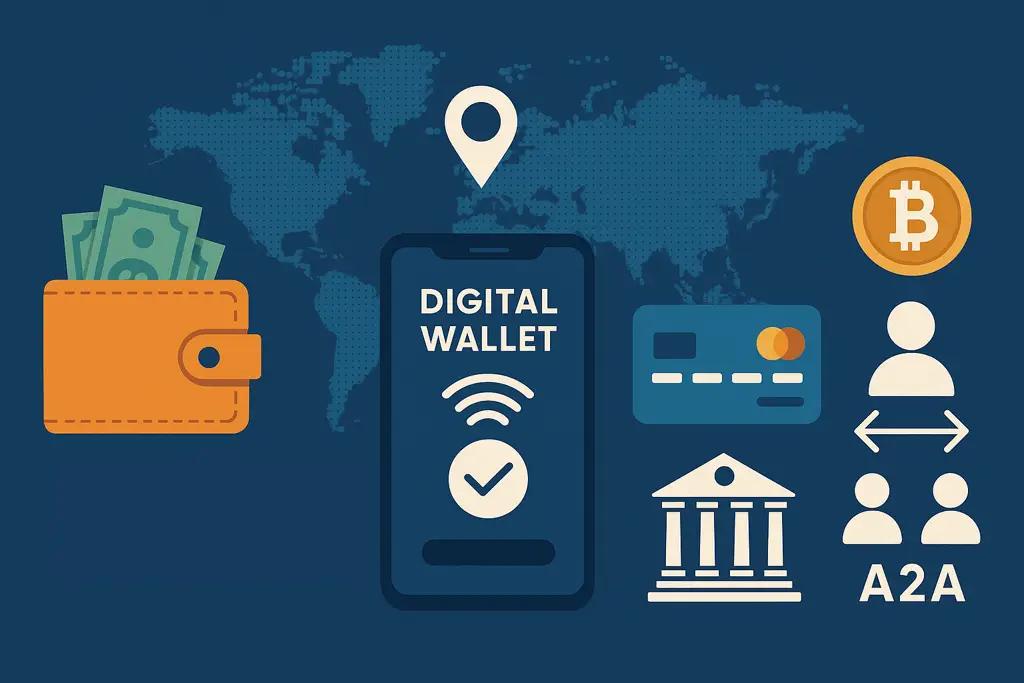
Published
05/21/2025, 10:52People’s payment habits around the world are changing rapidly — the rise of cashless and digital payment methods is transforming economies, reshaping business models, and demanding new approaches from government regulators. Like other CIS countries, Kyrgyzstan is actively seeking its place in this evolving financial system.
Economist Nurgul Akimova analyzed global and regional trends and shared her insights in an article prepared exclusively for the Akchabar editorial team.
According to the FIS Global Payments Report 2023, the share of cash transactions worldwide has dropped from 27% to 16% over the past four years, and it is projected to decline further to 10% by 2026.
In Sweden, only 10% of purchases are made with cash, in Norway — 6%, Denmark — 11%, and Finland — 14%. The average across the Eurozone is around 50%, but there are significant differences within the bloc: Germany — 51%, Austria — 49%, and Malta — 58%. In contrast, the share is lower in France and Spain — 34% and 37% respectively, while in Italy it stands at 69%.
In Japan, cash accounts for 51% of point-of-sale (POS) payments, while in South Korea it stands at 24%. Electronic payments dominate in China and Southeast Asia: in China, cash makes up less than 14% of transactions; in India — 19%, in Thailand — 56%, and in Vietnam — 63%.
In the United States, cash is used in 19% of retail transactions; in Canada — 15%, in Australia — 19%, in Brazil — 27%, and in Argentina — over 50%. In South Africa, the figure is 57%, in Egypt — 67%, and in Saudi Arabia — 33%.
In the CIS countries, cash still plays a significant role, but its share is declining faster than in Europe. In Russia, cash accounts for about 33% of all retail payments; in Kazakhstan — 41%, Uzbekistan — 48%, Belarus — 51%, Armenia — 60%, Azerbaijan — 53%, Moldova — 58%, Tajikistan — 63%, and Turkmenistan — over 70%.
Kyrgyzstan is still among the countries with a high share of cash, with about 70% of all transactions going through cash registers or ATMs, but over the past five years, the country has seen the largest growth in the share of cashless payments in Central Asia.
The cost of accepting payments influences the choice of payment method for both businesses and customers. In the US, Canada, and Japan, acquiring costs 1.5–3% of turnover. In Sweden, 25% of small businesses spend up to 1% of their turnover on payments, a third spend up to 2%, and 10% spend more than 2%. In China, India, and Brazil, commissions for instant transfers do not exceed 0.1%, which is the main driver of the explosive growth of real-time payments.
In Russia, the acquiring commission is 1.3–2.2%, in Kazakhstan — 1–2%, in Uzbekistan — 1–1.5%, and in Belarus — 1.2–2%. In Kyrgyzstan, the commission for Elkart is 0.5–1%, and for Visa/Mastercard, it is 2–3%. The lower the commission, the faster the share of cashless transactions grows.
Cryptocurrencies are often discussed as the future of payments, but the actual statistics are more modest. In 2022, the volume of crypto payments between individuals and companies amounted to only $11.6 billion, which is less than 0.2% of global e-commerce (FIS, 2023, pp. 45–46). Most cryptocurrency holders see it not as a means of payment, but as a tool for investment or speculation.
In the US and Europe, most cryptocurrency holders use them for investment purposes. In China, crypto payments are banned, while in India and Brazil they are only allowed as investments. In Russia, Kazakhstan, Belarus, and Kyrgyzstan, cryptocurrencies are legal only for investment purposes but are prohibited as a means of payment. Kazakhstan has a pilot project in the MCC, Russia has an active P2P market, and Kyrgyzstan and Uzbekistan have mining and operations under regulatory control.
A2A payments (direct transfers between accounts) are becoming a major trend in the US, Europe, and Asia. In India, 15% of all online spending goes through UPI, in Brazil, Pix has doubled its share of instant transfers to 24% in e-commerce in a year, and in Sweden, Swish is used by 9 million people and 345,000 companies. In Russia, the Fast Payment System (FPS) handles more than 39% of all transfers between individuals, and Kazakhstan is developing its own instant payment system.
In Uzbekistan and Belarus, similar services are only just beginning to be introduced. In Kyrgyzstan, interbank real-time payments are still only being discussed, but mobile transfers within banks have already become a habit for most city dwellers.
The share of credit cards is declining worldwide: from 26% to 24% in offline payments and from 20% to 16% in e-commerce (FIS, 2023). In the US, credit cards account for 62% of all online payments, in Canada – 54%, in Japan – 40%, and in Australia – 36%. Debit cards are the main way people pay in Russia, Kazakhstan, Belarus, and Kyrgyzstan: in Russia, credit cards make up less than 10% of POS payments, in Kazakhstan, up to 15%, and in Kyrgyzstan and Uzbekistan, less than 3%.
In 2022, digital wallets accounted for 49% of all e-commerce payments worldwide (FIS, 2023). In China, 81% of online spending goes through WeChat Pay and Alipay, and in India, 50% goes through Paytm, PhonePe, and others. Apple Pay and PayPal are popular in the US and Canada, while Swish and MobilePay are popular in Sweden and Finland. In Russia, the leaders are YooMoney, SberPay, and SBPay; in Kazakhstan, Kaspi.kz and Homebank; in Belarus, MTBank and Belkart; and in Kyrgyzstan, Mbank, MegaPay, and Optima24 are growing. Click and Payme are popular in Uzbekistan. These services currently dominate P2P and service payments, but are rapidly penetrating retail trade.
The global e-commerce market grew by 10% in 2022, reaching $6 trillion. By 2026, it will exceed $8.5 trillion (FIS, 2023). Argentina, Indonesia, Vietnam, Turkey, and the Philippines are leading the way in terms of growth rates (15 to 21% per year). In Europe, the UK (up to 28% of retail sales), Germany, France, and the Netherlands are leading the way. In Russia, e-commerce accounts for more than 11% of retail trade, in Kazakhstan — about 12%, in Belarus — 8%, in Uzbekistan — 4%, in Kyrgyzstan — less than 1%, but the growth rate in the country is the highest among the CIS countries.
The payment structure in e-commerce is as follows: 49% of payments are made via wallets, 20% via credit cards, 12% via debit cards, 9% via A2A, 5% via installment plans (BNPL), and 2% in cash (FIS, 2023). In retail stores: 32% are wallets, 26% are credit cards, 23% are debit cards, and 16% are cash. Wallets and instant transfers lead the way in Asia, BNPL and fintech solutions in Europe, online payments (Pix and Mercado Pago) in Latin America, mobile finance in Africa and the Middle East, and cards and BNPL in North America. In Russia, Kazakhstan, Uzbekistan, and Kyrgyzstan, the share of cash is still high, but these markets are currently leading the way in terms of growth in new payment solutions.
Today, more than 70 countries are implementing fast payment systems, and central bank digital currencies (CBDCs) are being tested around the world, including in the EU, China, and Kazakhstan. Russia is piloting a digital ruble, Kazakhstan is testing a digital tenge, and Kyrgyzstan is discussing a digital som. Those who provide mass access to convenient, cheap, and secure digital payments will win — this is a chance for Kyrgyzstan to make a qualitative leap forward.



